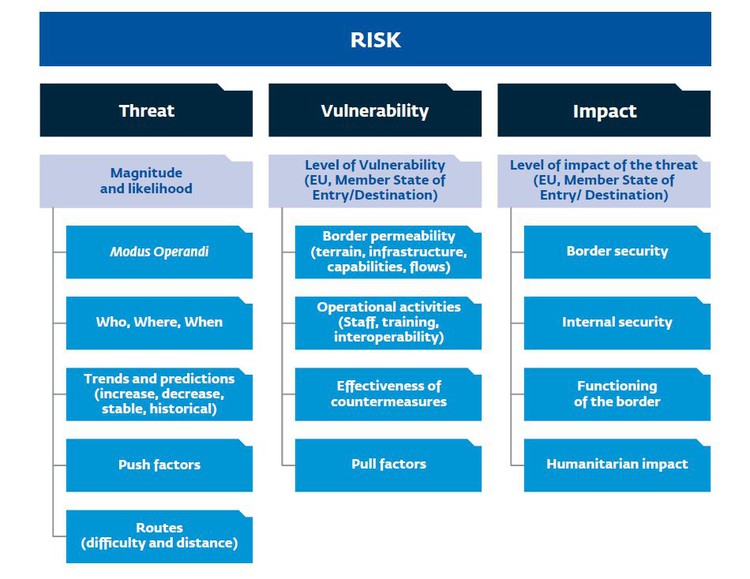The objective of the Common Integrated Risk Analysis Model (CIRAM) is to provide a conceptual model to assist Frontex and EU and Schengen countries in the preparation of risk analyses. It promotes a common understanding of risk analysis while simultaneously explaining how this tool can contribute to achieving greater coherence in the management of external borders. The latest update of CIRAM also accommodates the amendments to the European Border and Coast Guard Regulation, such as the development of the capability to conduct capacity assessments and to deploy Liaison Officers in third countries.
Monitoring and risk analysis
Risk analysis components
According to the model, a ‘threat’ is a force or pressure that may affect the management of the external borders, characterised by both its magnitude and likelihood; ‘vulnerability’ is defined as the capacity of a system to mitigate the threat; and ‘impact’ is determined as the potential consequences of the threat. The breakdown of the broad concept of risk into three components provides a structure for assessing risk that can be used by decision-makers at all levels to set priorities, implement countermeasures and define operational targets.
Defining risk as a function of threat, vulnerability and impact is a pragmatic way of structuring the information concerning risk. There are different ways of combining threats, vulnerabilities and impacts. The three components are not to be assessed in isolation or in any rigid sequence. Rather, each component is seen as a different angle from which to study the risk, and the assessment of one should inform the assessment of the other two.
